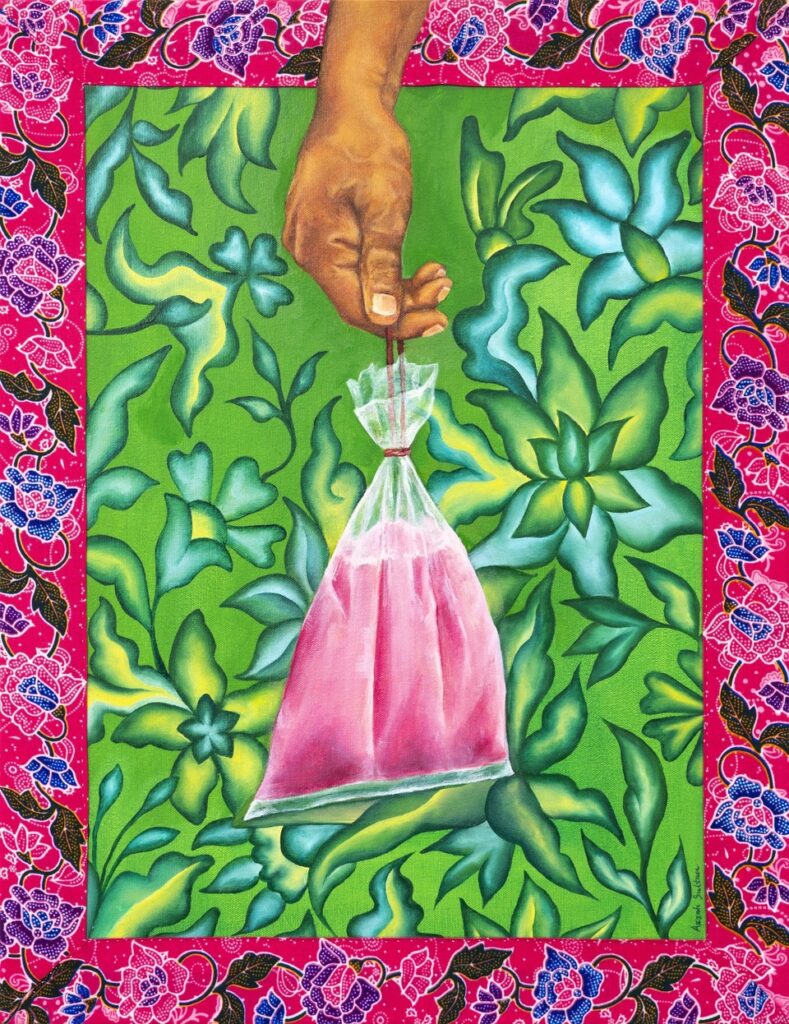

Over lunch, observed through a third-party perspective, is not just a witness of an artist and her mentor rather it’s a poignant narrative that speaks volumes about love, sacrifice, and the unbreakable bonds of family. It is a testament to the profound depths of a father-daughter bond. Baba was Azzah’s first view on selfless love—the archetype of manhood against which every future encounter would unwittingly be measured.
Their bond was one observed with a mix of awe and envy, a dynamic where Azzah, even as she grew in stature and intellect, remained the apple of Baba’s eye. Her first steps were into his waiting arms, her first words a mimicry of his. She learned to view the world through the lens he provided, a panorama filled with the possibility of the promises of life.
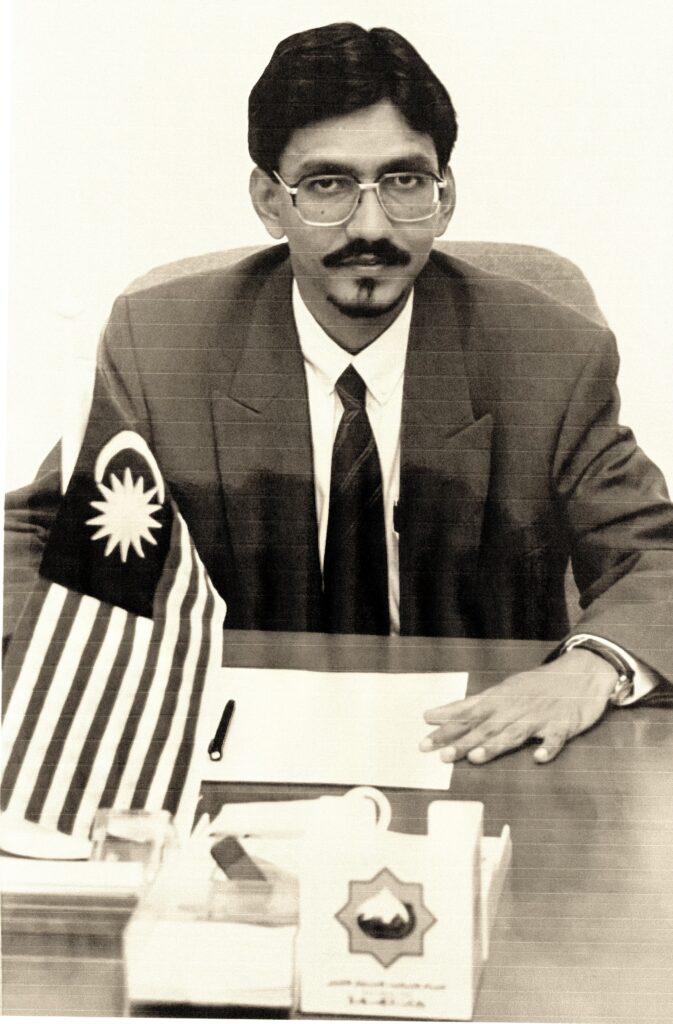
His every sacrifice—a silent sermon on the altar of fatherhood, his every success—a shared triumph that lit up the skies of her ambitions. Baba’s love wasn’t the loud, boastful kind—it didn’t need to be. It was the steady heartbeat underlying Azzah’s existence, the unwavering pulse that propelled her forward. In their story, you find the resonance of authenticity. From her childhood, Azzah’s artistic inclinations were evident. I recall Baba recounting an episode from her early school days, a project on Ocelot that signalled her nascent curiosity and tenacity. Even then, Azzah’s interests were diverse, ranging from endangered cats to aspirations of becoming a veterinarian.
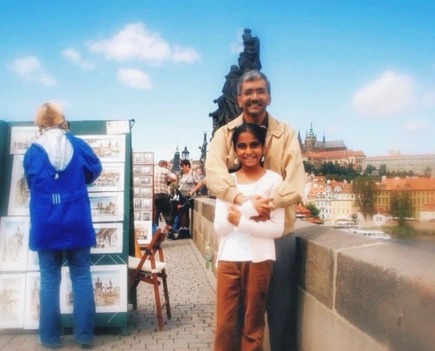

This wide-eyed enthusiasm was met with unreserved support from her parents, encapsulating their philosophy: “never say no to a child’s dreams, but guide them to understand and embrace the challenges they entail.” Azzah’s passion for art blossomed through her school years, culminating in her decision to pursue fine arts, a choice that initially baffled her science-oriented parents. Her father, with a mix of apprehension and pride, recalls the moment Azzah announced her intention to attend a prestigious art school. The financial implications were daunting, but the resolve in Azzah’s voice was unmistakable. This marked a pivotal moment, where Azzah’s decision set her on a path of self-discovery and artistic expression, while her parents embarked on a journey of understanding and appreciating the world of fine arts.


Baba’s initial perception of art as mere painting underwent a transformation as he witnessed Azzah’s work. He speaks of her art pieces with a newfound respect, acknowledging art as a medium for expressing feelings and exploring complex themes. Azzah’s forte in mixed media and the thematic depth of her work became a source of learning and admiration for her parents. The realization that her art often revolves around family and cultural themes adds another layer of intimacy and pride to their relationship. The intersection of culture, religion, and art forms a crucial part of Azzah’s artistic journey. Baba’s advice to deviate from depicting faces, grounded in religious beliefs, initially clashed with Azzah’s artistic freedom. However, as she matured, she found a harmonious balance, integrating Islamic principles with her personal comfort and her experiences as an artist of color. This evolution in her art reflects a deeper understanding of her identity and the diverse influences that shape her work. Baba’s wisdom, drawn from his own life experiences, has been a guiding force for Azzah.
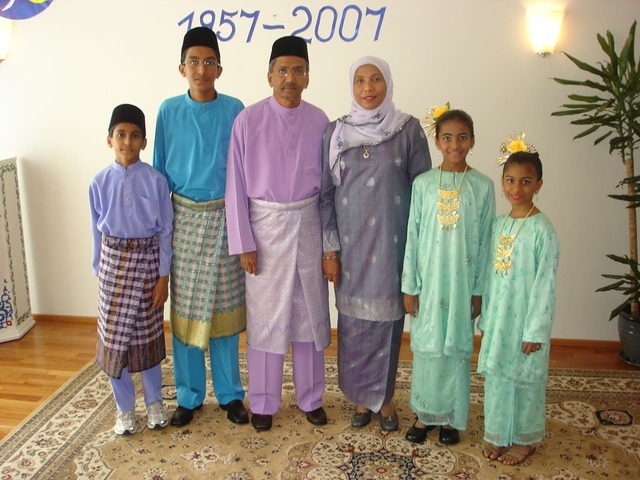
His emphasis on passion, focus, and planning is not just a lesson in art, but a philosophy for life. He recounts the bygone era when meticulous planning was a necessity, contrasting it with today’s immediacy. His stories of walking to lectures, envisioning a future, and overcoming socioeconomic challenges underscore the value of determination and vision, lessons that Azzah has absorbed and applied in her journey. Baba’s wisdom, drawn from his own life experiences, has been a guiding force for Azzah. He recounts the bygone era when meticulous planning was a necessity, contrasting it with today’s immediacy.
Azzah’s journey, marked by her father’s unwavering support and the mutual growth in understanding and appreciation of art, symbolizes the profound impact of family in shaping an artist’s path. Their story is a poignant reminder of the symbiotic relationship between an artist’s personal growth and their familial bonds. Azzah and Baba’s journey is not just about the making of an artist; it’s a narrative of love, understanding, and the enduring strength of family ties in the beautiful, often challenging world of art.
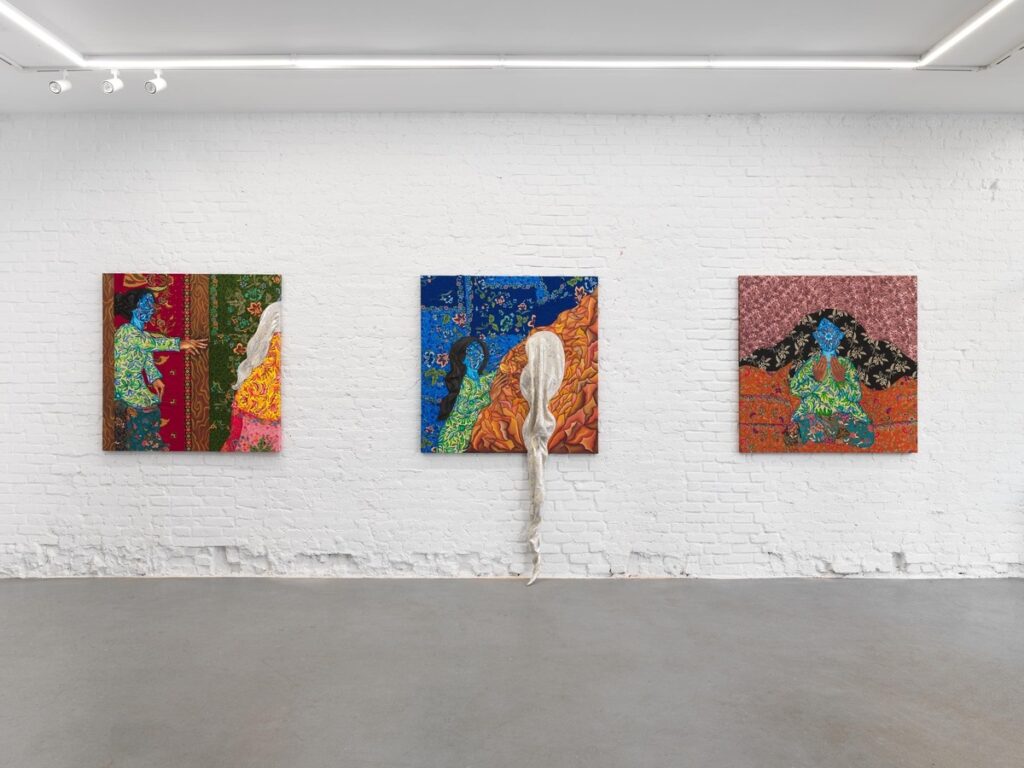
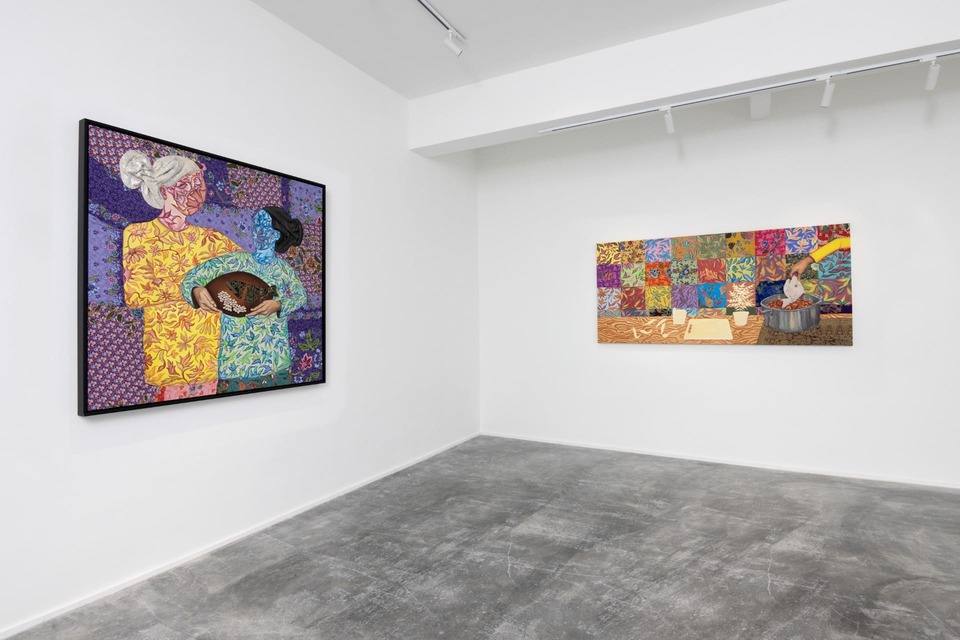
Azzah’s perspective on art as an inherently political act is a bold declaration of her truth. For her, the very act of creation is a defiance, a statement, a dialogue with the world. As an artist of color, she embraces the inextricable link between her creations and her identity. Her art is a reflection of womanhood, the intricate dance of familial roles, and the echoes of her personal experiences within the realms of mental health and feminism. These themes, she believes, are political in their essence because they challenge, question, and provoke. Painting, for Azzah, is an act of preservation—capturing fleeting moments tied to her roots and lived experiences. Her brush strokes are her way of speaking about frustrations and affections, preserving what she cherishes and rebelling against what she does not. Azzah is a storyteller whose narratives unfold in hues and contours, bringing to life the emotions and moments that define her. Her culture, Azzah reveals, was not a deliberate spearhead in her artistic journey but rather an organic influence that grew as she matured and longed for the familiar comfort of home. Through Amelia’s probing, Azzah shares her poignant realization of her deep connection with her Malaysian heritage, which surfaced during a summer spent in Penang. It was the familiar, yet always refreshing, acts of bonding—journeys cramped in a car, shared meals, the warmth of extended family—that reignited her cultural identity and subsequently influenced her art.
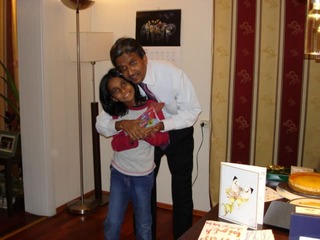

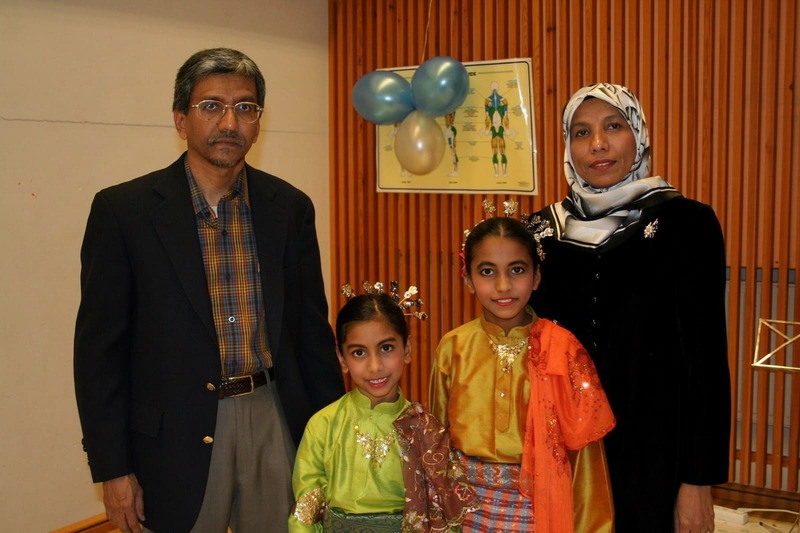
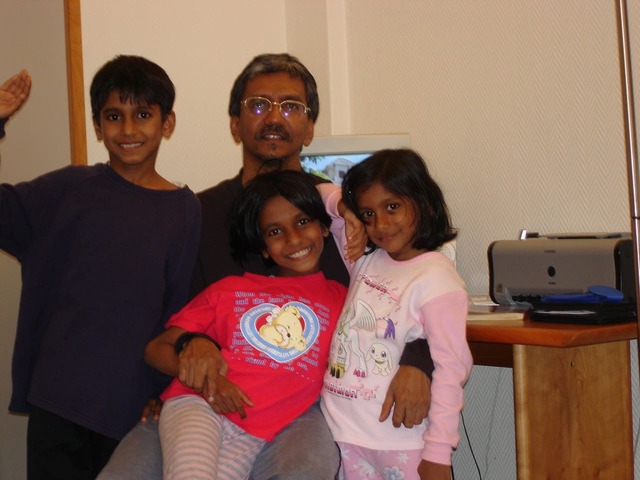
Azzah’s reconciliation with her culture and the notion of home is an ever-evolving narrative. Home, for her, is not a singular place but a mosaic of memories, people, and rituals that connect her to her roots. It’s in the shared laughter over a family meal, the scent of spices from Malaysian dishes, and the music that bridges the distance between her and her homeland. Through her art, she recreates this sense of belonging, transforming her canvases into a bridge that spans oceans and time zones.
The anticipation of presenting her art to a Malaysian audience brought with it a cocktail of nerves and excitement for Azzah. Her portrayal of everyday Malaysian sights—the very fruits and foods that are woven into the fabric of daily life—was her way of sharing her lens of homesickness. The response she received was a heartening affirmation that her audience could feel the yearning and love imbued in her work, transcending the ordinary and touching upon the universal experience of longing and belonging Azzah’s gaze towards the future is as clear as her three-to-five-year plans—she seeks growth, new artistic horizons, and continued ties to her family. Her work has moved beyond the celebration of food to the exploration of dreams, folklore, and nostalgia. Through Amelia’s insightful queries, we learn of the unwavering support from Azzah’s parents, her first patrons of art and life, whose belief in her is as foundational as the very ground she paints upon.
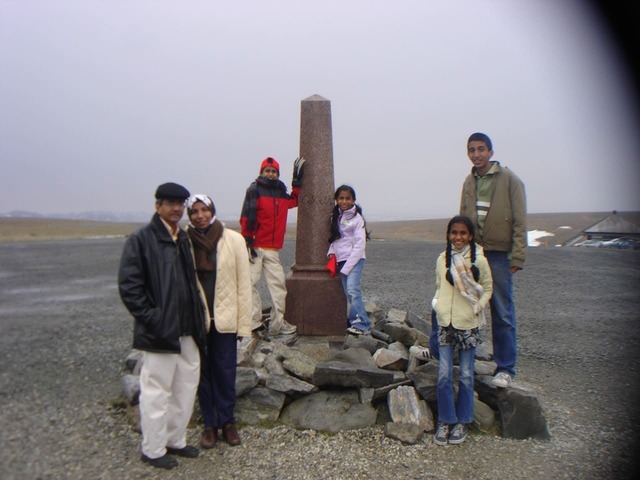
When asked what she will never forget about her parents, Azzah’s answer is simple yet profound: their unconditional support. It is this foundational support that has allowed her to pursue her art with confidence, to take risks, and to explore the world beyond her homeland with the assurance that her parents’ blessings follow her like a shadow.

